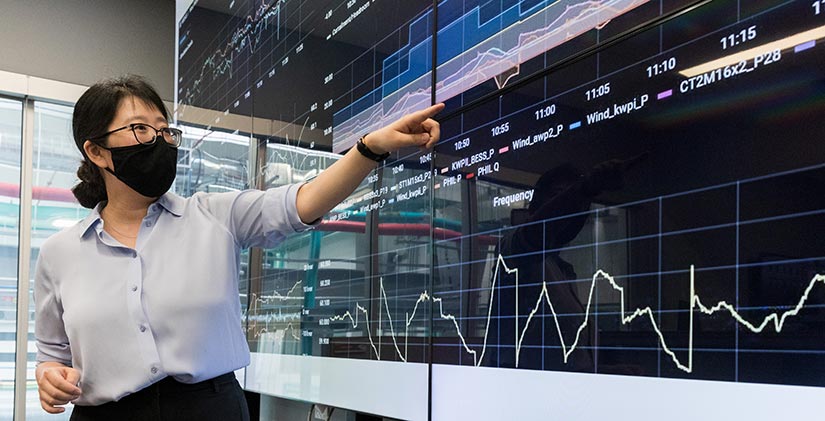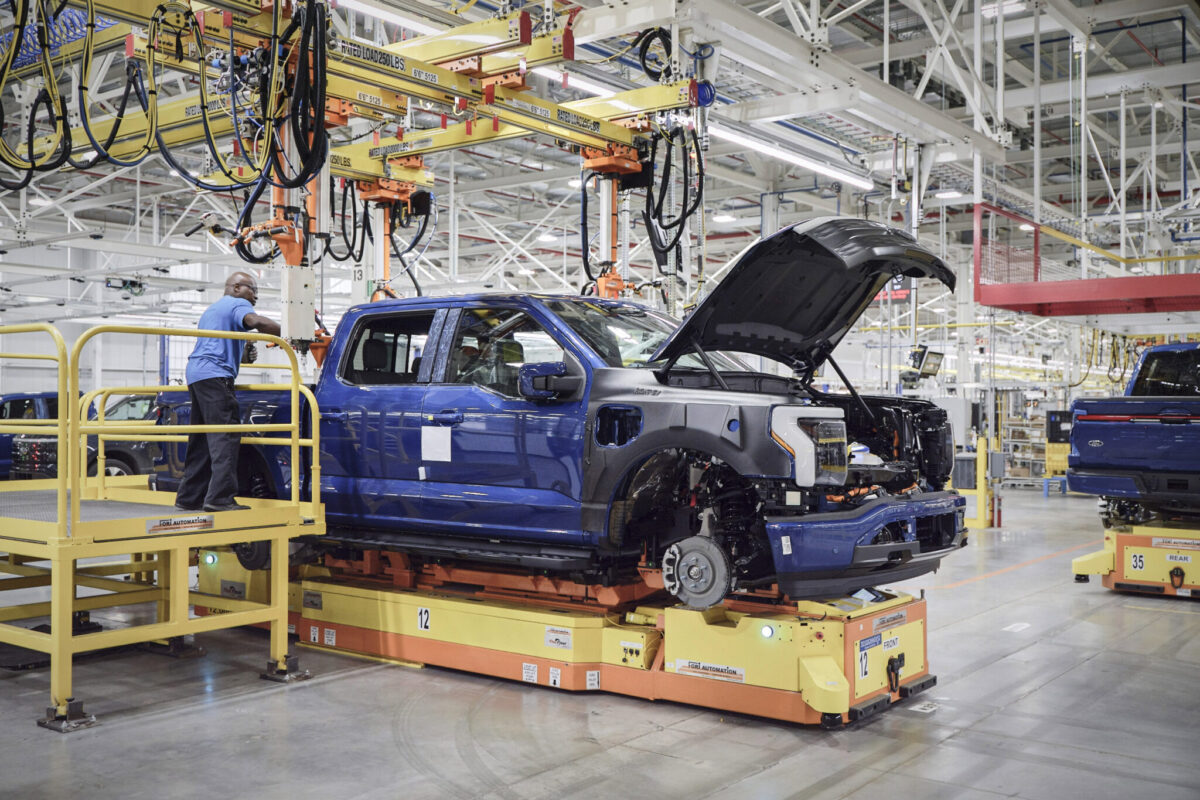The electrical grid in the United States needs a major upgrade as we transition to renewable and distributed energy. Not only is the infrastructure antiquated, but with incoming smart power electronics that control solar and wind energy coming onto the grid—as well as energy storage systems—a shift in grid technology from electro-mechanical to digital—and programmable—is needed. At the National Renewable Energy Laboratory (NREL) researchers have developed the Power Electronic Grid Interface (PEGI) platform that will help control and deploy upcoming power electronic devices for energy systems.
PEGI is part of NREL’s Advanced Research on Integrated Energy Systems (ARIES) platform, a research site for proving advanced energy system concepts. ARIES allows PEGI to explore the diverse grid impacts of power electronics, including everything from consumer electronics such as modern refrigerators and electric vehicles, to inverter-based resources such as wind, solar photovoltaics, and battery systems, and the next generation of grid technologies that are revolutionizing medium- and low-voltage power systems.
As part of its research efforts, NREL hosts 20 MW of wind, solar, hydrogen, vehicles, storage, and other resources, all of which can be used to emulate an extensive range of power system events and configurations.
“This is a critical moment for the industry and grid planners to understand the technologies shaping their systems and find solutions to their specific needs. PEGI is foremost an asset for partners to experiment in a realistic and risk-free environment,” said Barry Mather, manager of integrated devices and systems research at NREL.
PEGI is able to model grid scenarios at the megawatt scale, and is focused on addressing grid stability questions such as grid-forming inverter control, operating the grid with high amounts of inverter-based resources, and the interconnection of wind and solar plants.
Inventing grid scenarios
On the NREL campuses, power comes in from the local utility and first passes through a controllable grid interface, allowing researchers to customize power conditions. At this interface, researchers can invent grid scenarios such as a fault, a blackout, or a 100% renewable energy system. Down-line from the grid interface, PEGI equipment then evaluates the responses and interactions of power electronic devices under test.
PEGI provides users with a way to play out device operations for any power technology under any scenario, NREL reports. Overall, it is offers a realistic environment that can take the risk out of future technologies.
PEGI offers answers to the imminent question: How best to integrate inverter-based generation for different systems? It does this by allowing researchers to adjust the share of traditional or renewable resources, and experience its impacts at a power level relevant to industry.
“If they aren’t already, many operators will soon be facing questions about how to maintain system stability, as renewable energy mandates lead to larger shares of inverter-based resources. But realistically, there is no single answer besides that every system is different. The special role of PEGI is to show very precisely how a system would operate under future scenarios, and future mixes of renewable and conventional resources.” Mather said.
Power electronics are a fundamentally different type of generation than past electro-mechanical machines. An advantage of such power electronics is that engineers can program and access a wide variety of controls, which are now being explored for inverter-based resources in a global consortium.
PEGI in action
The NREL co-led Universal Interoperability for Grid Forming Inverters (UNIFI) Consortium is taking up this topic by uniting over 40 organizations across industry, academia, utilities, and government to share knowledge and remove the risk from the frontier of grid-supportive controls. PEGI has a prominent role in this effort by allowing the collaborators to develop and demonstrate inverter controls in many operational environments. Among other projects, the UNIFI Consortium will use PEGI to validate specifications that ensure interoperability requirements for grid-forming inverters from various manufacturers.
As an example of PEGI in action, NREL has pioneered and proved grid-forming controls in several applications. One will be support the island of Maui, where the instantaneous share of renewables is tipping toward 100%. NREL has created a tool, the Multi-Timescale Integrated Dynamic and Scheduling Model (MIDAS), to help operators manage the scheduling and stability of renewable resources. Having validated baseline aspects of the tool, researchers will use PEGI to deploy it on a scaled system with support from the DOE Solar Energy Technologies Office, as part of the SAPPHIRE project. PEGI will represent Maui’s soon-to-exceed 300 MW of renewable assets, in combination with other generation, to show that MIDAS can inform operations when renewables make a larger share of the generation mix.
This content is protected by copyright and may not be reused. If you want to cooperate with us and would like to reuse some of our content, please contact: editors@pv-magazine.com.









Thomas Edison wanted a power plant in every neighborhood and distributed DC power to all the homes in it. Westinghouse wanted a large power plant miles away from the city and distribution lines going hundreds of miles running AC high voltage power using transformers to step it down when it arrived at your neighborhood. Our infrastructure today is the Westinghouse dream not that of Thomas Edison. Today, with wind and solar generation and batteries to store the energy, the DC model would have been ideal. Homeowners, that have solar and batteries, could be independent on all but a few days a year when the sun does not shine for over 2 days. That is why they still have a backup generator or connect to the grid for “Back up” power. Some utilities, Like Pacific Gas and Electric are making micro grids with batteries and distributed solar from large solar farms nearby. This allows them to cut the power going through high voltage transmission lines when the wind conditions become dangerous without cutting the battery power that still can power homes. They still depend on the long-distance transmission, most of the time, to keep the batteries topped off but it is changing the dynamics of the grid distribution model. It took a hundred years to build out the Westinghouse transmission and distribution infrastructure we have today. How many years will it take to build up the hybrid system that we need to consider stopping global climate change?